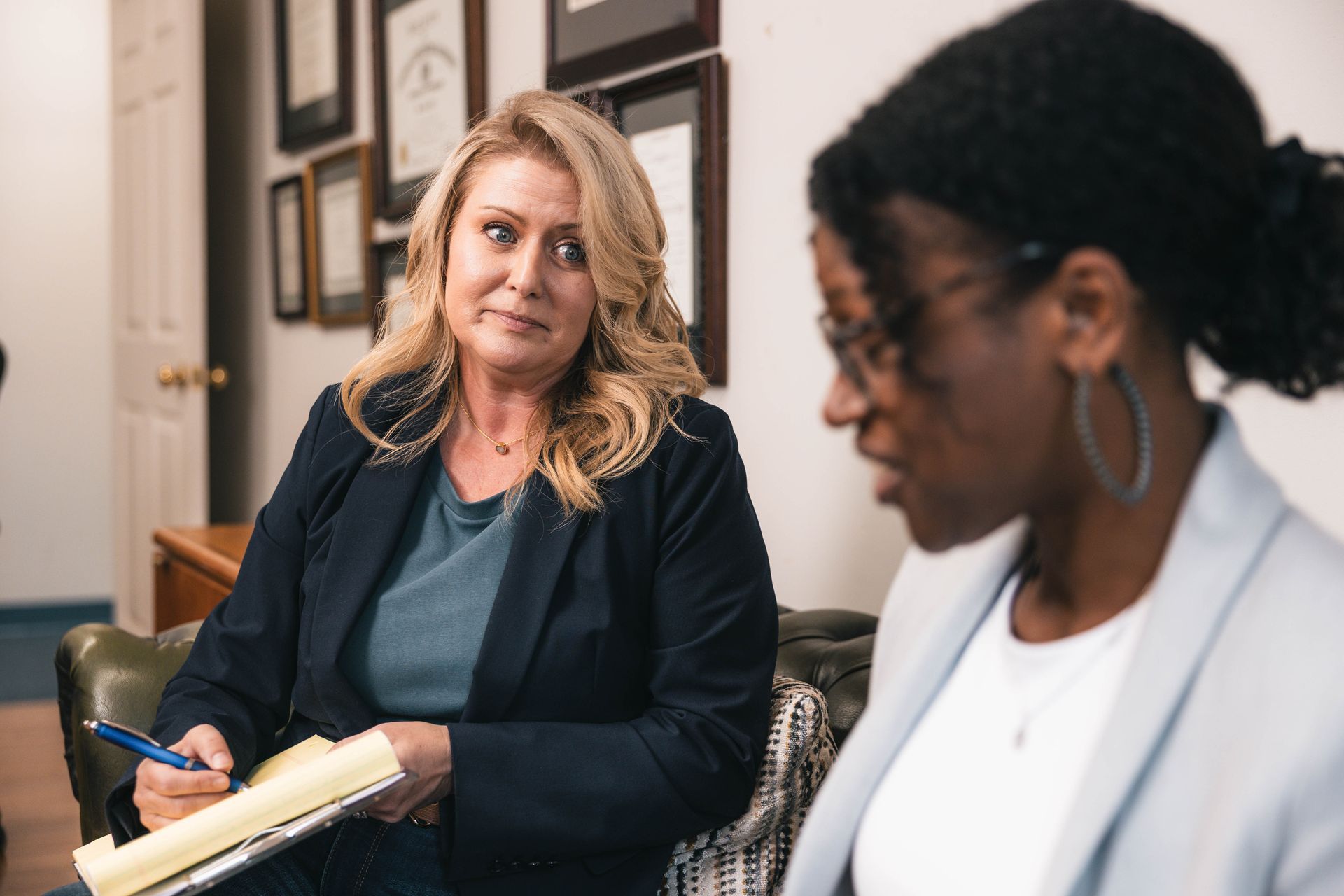Blog

November 6, 2025
Accurate, timely K-1s keep investor relationships strong and cash flowing. Start with the agreement Your waterfall drives allocations—confirm special allocations, deficit restoration obligations, and any targeted capital account provisions. Reconcile the audited trial balance to the tax return early. Communication is part of accuracy Share a calendar with investors and property managers. Clarify data cutoffs and who reviews draft K-1s. Keep a one-page memo that explains first-year proration, state filings, and any unusual items. Multi-state? Plan composite filings If you have nonresident partners in multiple states, decide whether to file composite returns, withhold, or both—well before March. Deliver investor-ready packets Include a concise narrative, capital account rollforward, and state instructions so funds can process returns quickly. Want fewer K-1 questions this season? Build a repeatable packet now.

October 23, 2025
Year 15 is a crossroads: refinance, sell, transfer, or restructure—each path has tax and compliance implications. Map your options early Start modeling at Year 12–13. Review capital accounts, deferred developer fee status, and any soft-loan covenants. Align your plan with the extended use period and state requirements. Common paths GP/NP buyout of investor interests Refinance and reinvest in rehab Transfer under a qualified contract (where allowed) Sale to a mission-aligned owner Tax considerations Potential gain recognition, depreciation recapture, and capital account effects can surprise owners who wait too long. Anticipate these outcomes and structure agreements that match your goals. Operations still matter Keep compliance strong through exit. Clean files and steady financials support valuations and reduce friction. Considering options? Build a Year-15 plan that protects mission and financial outcomes.

October 23, 2025
Navigating compliance under your reg ulatory agreement and the HUD Consolidated Audit Guide can be complex, especially for projects financed or insured under Section 221(d)(4) and Section 8 programs. These programs carry unique requirements that, if misunderstood or overlooked, can lead to findings, questioned costs, or even repayment obligations. Below are some of the most common pitfalls CPA firms encounter during HUD audits. 1 - Weak Internal Controls Over Tenant Eligibility and Rent Calculations For both Section 221(d)(4) projects and Section 8 properties, tenant eligibility and rent calculation accuracy are crucial. Inadequate review of income verification, failure to apply HUD’s annual income limits, or missing third-party documentation can all lead to compliance findings. Establishing strong internal control processes and regular file reviews is essential to maintaining compliance. 2 - Improper Handling of Replacement Reserves and Escrow Accounts HUD requires restricted accounts—such as replacement reserves, residual receipts, and escrow funds—to be used only for approved purposes. Common issues include unauthorized withdrawals, failure to obtain HUD approval before use, and late deposits. Proper segregation of funds and ongoing reconciliation are key to avoiding audit findings. 3 - Unallowed Distributions to Owners HUD imposes strict limits on when and how owners may take distributions from project operations. Under your Regulatory Agreement, distributions are permitted only after all required deposits to reserve and escrow accounts have been made and only from surplus cash . Common violations include, using project funds for personal expenses, or withdrawing more than the allowable amount. Such actions can trigger repayment obligations and HUD enforcement actions. Maintaining accurate surplus cash calculations and adhering strictly to distribution provisions are critical to staying compliant. 4 - Mishandling of Tenant Security Deposits HUD regulations require strict segregation and control over tenant security deposits to protect both residents and project owners. Security deposits must be maintained in a separate, federally insured bank account, clearly identified as the tenant security deposit account. The cash balance in this account must always equal or exceed the total tenant security deposit liability recorded on the project’s books. Common pitfalls include commingling these funds with operating cash, failing to perform monthly reconciliations, or not transferring accrued interest to tenants as required. Additionally, improper application of security deposits at move-out—such as using them for non-allowable charges—can lead to audit findings and repayment obligations. Consistent reconciliation, detailed recordkeeping, and adherence to HUD Handbook 4350.3 guidance are essential to maintaining compliance and safeguarding tenant funds. 5 - Noncompliance with Reporting Deadlines HUD requires audited financial statements to be submitted via the FASSUB system within 90 days of fiscal year-end . Many multifamily entities miss this deadline due to incomplete documentation or lack of communication between management and auditors. Timely coordination and maintaining audit-readiness throughout the year can prevent these compliance headaches. 6 - Failure to Stay Current with HUD Updates HUD frequently updates its handbooks, notices, and compliance guidance. Entities relying on outdated information—especially those under long-term Section 221(d)(4) financing—risk noncompliance with revised requirements. Regular consultation with a CPA firm familiar with HUD programs ensures management stays informed and prepared. Final Thoughts HUD compliance is detail-oriented and highly technical. Whether managing a new construction under Section 221(d)(4) or administering a Section 8 property, maintaining accurate records, segregating restricted funds, and staying current with HUD guidance are essential. Engaging an experienced CPA firm can help navigate the audit process smoothly and ensure continued eligibility for HUD support. At Little & Associates, LLC, we specialize in audit engagements for properties that are juggling LIHTC along with HUD-insured financing. Give us a call to see if we can help.

September 30, 2025
The first year tax return filing of a LIHTC (Low-Income Housing Tax Credit) partnership is a critical compliance and planning milestone, especially as it relates to low income housing tax credits, historic rehabilitation tax credits, energy credits, bonus depreciation, and first year elections. Here’s why each area is so important: Low Income Housing Tax Credits (LIHTC) The first-year filing certifies the project’s eligibility, establishes the eligible and qualified basis, and determines the start of the credit period. The credit is prorated in the first year based on the number of months the building is in service, and the filing sets the foundation for the 10-year credit period. Failure to properly file and certify can result in denial of the credit, making this filing foundational for the entire credit period. Historic Rehabilitation Tax Credits When a project also qualifies for historic rehabilitation credits, the first-year return sets the placed-in-service date for both credits, determines the timing and allocation of credits, and documents compliance with IRS requirements for partnership structure and credit allocations. The basis for LIHTC is reduced by the amount of the historic credit, so accurate first-year reporting is essential to avoid errors or double counting. Errors or omissions can result in disallowance or recapture of credits. Energy Credits The first-year filing establishes the placed-in-service date for both LIHTC and energy credits (such as the 45L energy credit), determines the correct basis for each credit (with the energy credit reducing the depreciable basis but not the LIHTC basis), and sets the credit periods for future filings. Proper elections and documentation ensure compliance, maximize credit benefits, and reduce the risk of recapture or IRS challenge in subsequent years. Bonus Depreciation The first-year return is the only opportunity to make or elect out of bonus depreciation for property placed in service that year. This decision directly affects the partnership’s tax deductions, eligible basis, and the calculation of LIHTC. The election must be made on a timely filed return and is generally irrevocable, making accuracy and timeliness essential. Overstating depreciation can reduce the partnership’s tax basis in the property, potentially impacting the amount of LIHTC available and the timing of credits allocable to investors. First Year Elections The first-year return is when the partnership must make irrevocable elections and provide required certifications that establish the foundation for the credit calculation and compliance for the entire credit period. These include certifying the placed-in-service date, eligible and qualified basis, the applicable fraction, and the start of the credit period, as well as filing Form 8609 for each building. Failure to make these elections or certifications can result in denial of the credit unless reasonable cause is demonstrated. There are also reporting elections to be made during the first year that specifies the policy for the accrual, capitalization, or amortization of certain expenditures. First year elections in these areas are critical because they often represent a one-time or annual opportunity to set the tax treatment for significant costs. Missing or mishandling these elections can result in lost deductions, less favorable tax timing, or the need for IRS consent to change methods in future years. Properly making these elections in the first year ensures optimal tax benefits and compliance for the partnership. In summary, the first year tax return filing for a LIHTC partnership is the foundation for all future compliance and calculations. It is the only opportunity to make certain elections, establish eligibility, and set the basis for all credits and deductions. Errors or omissions in this filing can have long-term negative consequences, including denial or recapture of credits and loss of tax benefits.

September 17, 2025
If you manage a LIHTC property or a nonprofit housing organization, annual affordable housing audits are part of the rhythm of operations. Think of them as a structured checkup: confirming the story your financials tell, satisfying investor and lender requirements, and laying the groundwork for smooth filings and compliance. Why these audits matter Audits reassure partners that cash, reserves, and project activity align with program rules. They’re often required by state agencies, lenders, or investor agreements. For properties from Mid City Baton Rouge to Houston’s East End—and rural communities like Delhi and Tallulah—clear planning keeps the process efficient. What your auditor will request Expect a PBC (prepared-by-client) list that includes the trial balance, bank statements, debt agreements, management agreements, invoices for larger spend items, and support for specialized items such as developer fees, surplus cash, and restricted escrows. If your project has HUD components, your auditor will map accounts to HUD templates to streamline REAC reporting. Typical timeline Planning call and PBC list Fieldwork (on-site or remote) Partner and lender tie-outs 4. Delivery of audited financial statements and management letter Common findings—and how to prevent them Unreconciled reserves, unposted accruals, and incomplete tenant support are frequent culprits. Set monthly close deadlines, reconcile bank accounts, and review accounts receivable. If you’re approaching placed-in-service, start organizing documentation for cost certification now so the final audit moves quickly. Make next year easier Close your books on a predictable cadence, review year-end journal entries, and keep accurate records. Tie this workflow to your team’s calendar so partners, investors, and auditors stay aligned. Want a smoother audit cycle and fewer last-minute surprises? Our team can help you plan the year, not just the audit.

August 28, 2025
The LIHTC cost certification is the final cost audit that supports IRS Form 8609 issuance. Do it right, and investor equity and credits flow on time. Do it late—or incorrectly—and the project can stall right when it needs momentum. Milestones to watch Construction completion and punch list Final draw and retainage release As-built budgets and change orders Placed-in-service dates by building Final sources and uses Documents to assemble early Contracts and all amendments, pay apps and change orders, lien waivers, architect/engineering invoices, permit/impact fees, developer fee schedule and payments, land/closing files and other permanent documents, loan statements or history, draw schedules, and settlement statements. Organize by cost code or draw, and keep track related-party transactions. State agency nuances Louisiana , Mississippi , Arkansas , Alabama, Tennessee, Oklahoma, and Texas each have checklists and formats. Expect different eligible basis treatments, developer fee and contractor limit caps, and documentation preferences. Start with the strictest checklist so one binder works everywhere. How to speed acceptance Reconcile construction draws to the GL; tie contracts to change orders; separate soft costs consistently; document developer fee calculations; and make it easy for reviewers to verify totals. Coordinate timing with lenders and investors so 8609s can be requested as soon as reports are issued. Closing out construction soon? Line up your audit now so equity and credits land when you need them.

August 1, 2025
The 10% carryover test protects your credits: LIHTC state agencies require at least 10% of reasonably expected basis to be incurred within about 12 months of award. Miss it, and credits can be at risk. What counts toward 10% Land, land improvements, design fees, pre-development, environmental and geotech, and early construction activity typically count. Your CPA will verify the totals against contracts, invoices, and proof of payment. A practical timeline Month 0–2: Confirm allocation date and expected basis Month 2–6: Track eligible costs weekly; keep a dedicated folder Month 6–10: CPA pre-review of ledgers and invoices Month 10–11: Finalize testing; obtain missing documentation Month 12: Issue report and submit the package to the state agency Avoid these pitfalls Waiting to engage your auditor; fuzzy scopes for soft costs; and incomplete pay evidence. Build a single spreadsheet that lists invoices, dates, vendor, purpose, and eligible vs. ineligible status—updated in real time. New allocation? Set your carryover timeline now and leave room for review before the deadline.
